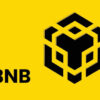
In the realm of modern finance and technology, Bitcoin has emerged as a revolutionary force. Often hailed as “digital gold,” Bitcoin represents a new era of financial innovation and investment. This article explores how Bitcoin has evolved into a digital asset akin to gold, its unique properties, and the implications for investors and the global economy.
Introduction
Bitcoin, introduced in 2009 by the pseudonymous creator Satoshi Nakamoto, was the first cryptocurrency to leverage blockchain technology. Initially, it was perceived as a niche digital asset with little real-world utility. Over time, however, Bitcoin has gained widespread recognition and acceptance, evolving into a prominent financial instrument often compared to gold. This article delves into Bitcoin’s journey from a novel concept to “digital gold,” examining its defining features, historical evolution, and its impact on the financial landscape.
Bitcoin’s Genesis: From Concept to Reality
Bitcoin’s creation was a response to the 2008 financial crisis, which exposed the vulnerabilities and inefficiencies of traditional financial systems. Nakamoto’s whitepaper outlined a decentralized digital currency that could operate without the need for intermediaries like banks. Bitcoin’s core innovation lies in its decentralized ledger, known as the blockchain, which records all transactions transparently and securely.
Key Points:
- Decentralization: Bitcoin operates on a peer-to-peer network, eliminating the need for a central authority.
- Blockchain Technology: This distributed ledger ensures transparency and security.
- Limited Supply: Bitcoin’s total supply is capped at 21 million coins, mimicking the scarcity of precious metals like gold.
Bitcoin vs. Gold: A Comparative Analysis
1. Scarcity and Supply
Gold has long been valued for its scarcity and finite supply. Similarly, Bitcoin’s capped supply of 21 million coins introduces scarcity into the digital realm. This limited supply creates a sense of value and rarity, contributing to Bitcoin’s comparison with gold.
- Gold: The total quantity of gold on Earth is limited, and mining operations are resource-intensive.
- Bitcoin: New bitcoins are introduced through mining, with rewards halving approximately every four years, gradually reducing the rate of new issuance.
2. Store of Value
Gold has been a trusted store of value for thousands of years, preserving wealth across generations. Bitcoin’s digital nature, combined with its scarcity, has led to its increasing role as a store of value in the modern age.
- Gold: Historically used as a hedge against inflation and economic instability.
- Bitcoin: Gaining traction as a hedge against currency devaluation and economic uncertainty, especially in uncertain financial climates.
3. Liquidity and Accessibility
Gold is a physical asset, which can make transactions and storage cumbersome. Bitcoin, on the other hand, is entirely digital, offering greater liquidity and ease of access.
- Gold: Requires physical storage and is subject to transaction fees and logistical challenges.
- Bitcoin: Can be traded and stored digitally, providing instant access and ease of transfer.
Historical Evolution: Bitcoin’s Journey to “Digital Gold”
1. Early Days and Adoption
Initially, Bitcoin was viewed as a speculative asset with limited use. Early adopters saw potential in its technology and philosophy, leading to gradual growth in acceptance. Over time, Bitcoin began to attract the attention of investors, institutions, and even governments.
2. Institutional Interest and Market Growth
In recent years, Bitcoin has gained significant institutional interest. Major corporations and financial institutions have started to invest in or accept Bitcoin, further legitimizing it as a valuable asset.
- 2017 Bull Run: Bitcoin experienced a dramatic surge in value, drawing mainstream media attention and sparking increased interest.
- 2020-2021 Institutional Adoption: Prominent institutions, including Tesla and Square, announced significant investments in Bitcoin, contributing to its rise in value and acceptance.
3. Regulatory Developments
As Bitcoin’s prominence grew, so did regulatory scrutiny. Governments and regulatory bodies worldwide began to address Bitcoin’s implications for financial systems and investor protection.
- Regulatory Clarity: Efforts to establish clear regulatory frameworks aim to balance innovation with security and investor protection.
Bitcoin as a Hedge: The Role of “Digital Gold”
1. Economic Uncertainty and Inflation
In times of economic uncertainty and inflation, Bitcoin’s fixed supply makes it an attractive option for preserving wealth. Unlike traditional currencies that can be printed at will, Bitcoin’s supply is predetermined, providing a hedge against inflationary pressures.
- Inflation Hedge: Bitcoin’s limited supply contrasts with fiat currencies that can experience inflation due to overproduction.
2. Portfolio Diversification
Investors increasingly view Bitcoin as a portfolio diversifier. Its correlation with traditional assets like stocks and bonds is relatively low, offering potential benefits for diversification strategies.
- Risk Management: Including Bitcoin in investment portfolios can reduce overall risk and enhance returns.
The Future of Bitcoin: What Lies Ahead?
As Bitcoin continues to evolve, its role as “digital gold” will likely become more pronounced. Key areas to watch include:
1. Technological Advancements
Ongoing technological developments, such as the Lightning Network and improvements in scalability, will impact Bitcoin’s utility and value.
- Scalability Solutions: Enhancements to transaction speed and cost-effectiveness will influence Bitcoin’s adoption.
2. Regulatory Landscape
The evolving regulatory environment will play a crucial role in shaping Bitcoin’s future. Clear regulations could enhance investor protection and market stability.
- Global Regulation: Harmonized regulations across jurisdictions could provide a more stable framework for Bitcoin’s growth.
Conclusion
Bitcoin’s evolution into “digital gold” highlights its transformative impact on the financial landscape. Its unique properties, including scarcity, decentralization, and digital nature, position it as a modern counterpart to traditional gold. As Bitcoin continues to gain traction and acceptance, it is poised to play an increasingly significant role in the global financial system.
For investors and enthusiasts, understanding Bitcoin’s journey and its comparison to gold provides valuable insights into its potential as a store of value and investment asset. Whether as a hedge against inflation or a portfolio diversifier, Bitcoin represents a groundbreaking development in the world of finance, ushering in a new era of digital assets.











